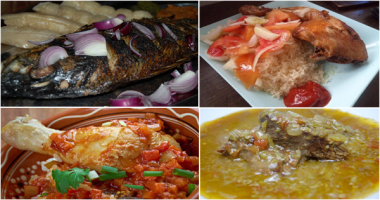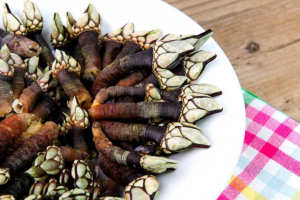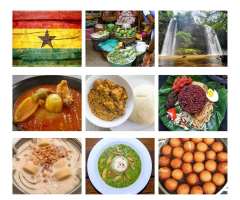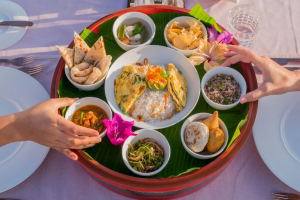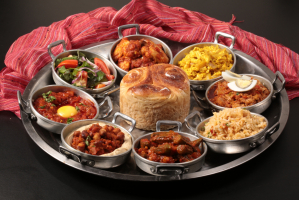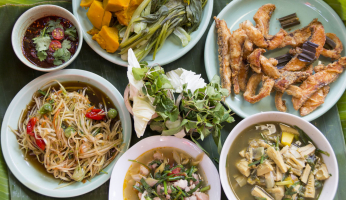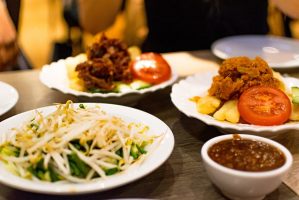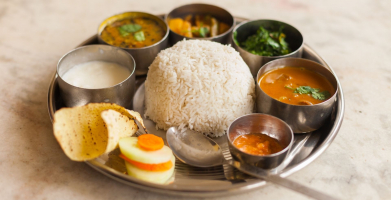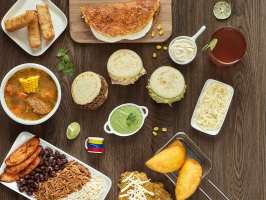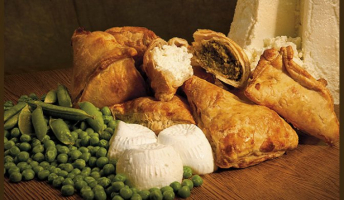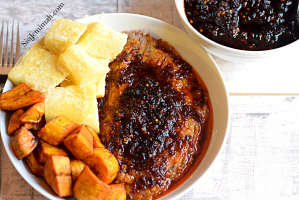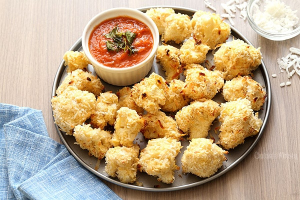Top 8 Nigeria's Speciality Foods
Niger's specialities are a must-try for anybody searching for real African food. Niger's cuisine includes grilled meat, basic foods, seasonal vegetables, ... read more...sauces, and so forth. Nigerians like Moringa leaves in their salads, which go with practically every Niger food. The next eight meals will blow your mind if you are a gourmet.
-
Jollof, often known as jollof rice, is a West African rice dish. The meal is normally cooked in a single pot using long-grain rice, tomatoes, onions, spices, vegetables, and meat, however the ingredients and cooking techniques vary by location.
Jollof rice is usually made with rice, cooking oil, and veggies including tomato, onion, red pepper, garlic, ginger, and Scotch bonnet chili peppers. To make the meal more colorful, tomato paste (purée) is added. Spices, salt, stock cubes (a combination of flavor enhancers, salt, nutmeg, and herbs), curry powder, and dried thyme are used as seasonings. To accompany the meal, chicken, turkey, beef, or fish are frequently offered.
The standard profile for Nigerian jollof rice contains long grain parboiled rice, tomatoes and tomato paste, pepper, vegetable oil, onions, and stock cubes, however this varies greatly. The majority of the components are cooked in one pot, with a rich beef stock and fried tomato and pepper puree serving as the foundation. The rice is then added and cooked in the liquid. The meal is then topped with the protein of choice and frequently accompanied by fried plantains, moi moi, steaming vegetables, coleslaw, salad, and so on. In Nigeria's riverine districts, where fish is the primary source of protein, seafood frequently replaces chicken or beef as the protein of choice.
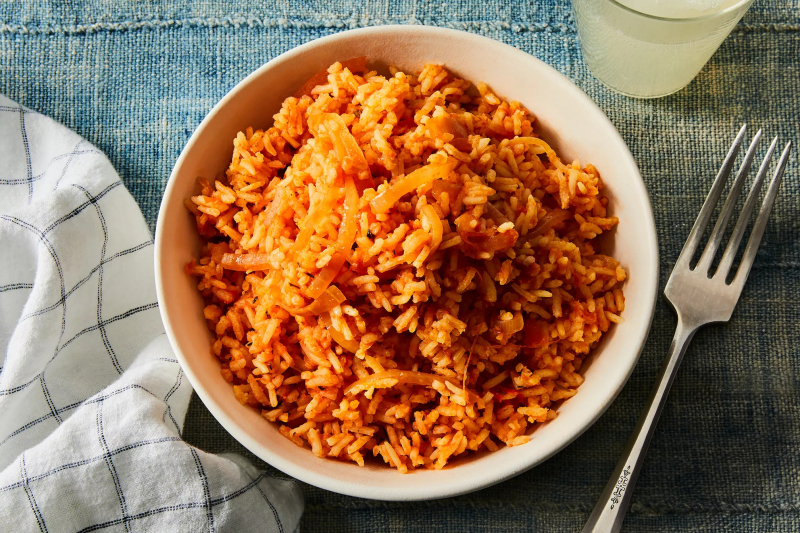
Source: Food52 Source: Kikifoodies -
Palm nut soup is a type of soup prepared from palm fruit that is popular in the African culture. It was invented by the Urhobo tribe of Delta State, Nigeria. Palm nut soup has evolved into a European dish.
Banga is a sort of palm fruit soup from Nigeria's southern Niger Delta, specifically from the Itsekiri ethnic group. This cuisine is distinct from "Ofe Akwu," a variety prevalent in Igbo culture. In terms of ingredients and technique, the Binis have a soup made from palm fruits that is comparable to "Ofe Akwu."
The delicacy is served alongside various foods in Nigeria, such as starch (Usi) for the Urhobo people of Delta State, Nigeria, banku for Ghana, and rice for the Igbo tribe. Banga soup is seasoned with beletete, aidan fruit, rohojie, Obenetietien (Banga spice leaves), a stick of oburunbebe, finely chopped onion, crushed crayfish, chili pepper or scotch bonnet, and salt. The soup is sometimes served with kwacoco, a cocoyam (taro) pudding. Fresh catfish (fresh fish Banga soup), dried/smoked fish, or beef are commonly used in the preparation of Banga Soup.
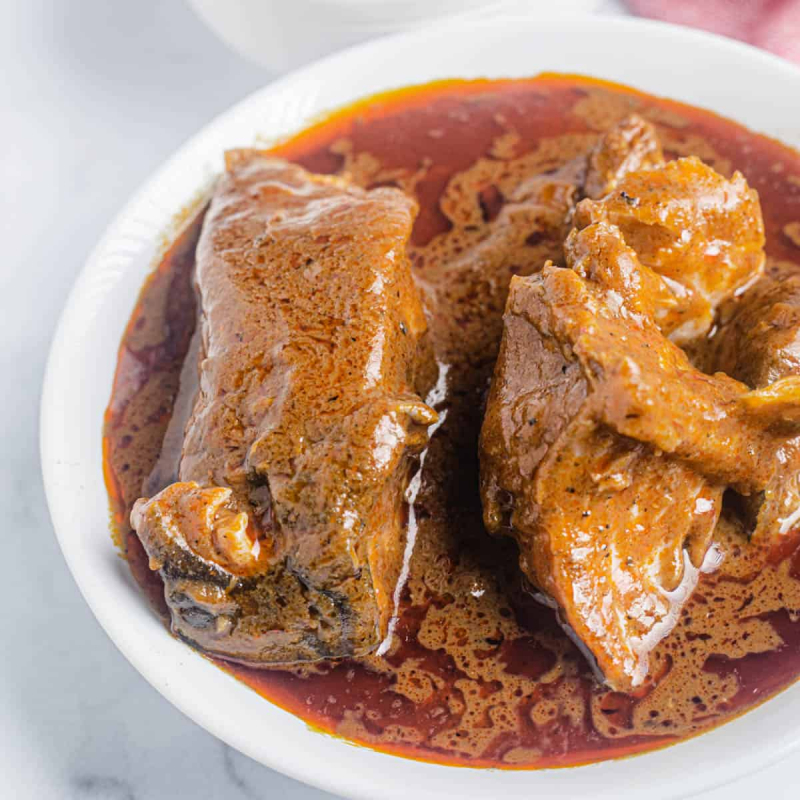
Source: Low Carb Africa Source: Sweet Adjeley -
Dambou (or Dambu) is a dish cooked with grains and Moringa that is native to the Zarma and Songhai of Southwestern Niger. It is eaten at any time of day or night, but most notably during celebratory occasions such as picnics and weddings. This meal is also popular among the Dendi people of North Benin and other places in West Africa. It is also prevalent in the Zongo Settlements, where the Songhai and Zarma travel.
Dambou is prepared according to the cook's whim and inclination. Cooks typically use rice flour, fine hard wheat semolina (couscous semolina), or millet, wheat, or corn couscous for basic dishes. The grains are cooked for roughly 20 to 30 minutes before being combined with the already boiled moringa leaves. Finally, the remaining raw components are added: onion, chile, salt, broth, peanut, vegetable oil, meat or fish as a side dish.
Dambun shinkafa is a northern delicacy that is slowly making its way into many Nigerian homes. It's no surprise that dambun shinkafa is nutritious. Please keep in mind that a rice cooker may be used to make dambun shinkafa. If you don't have one of these, you may use a standard pot like this instead. Dambun shinkafa in pot is one of the world's most popular current trendy dishes. It's simple, fast, and delectable. Every day, millions of people enjoy it. They're excellent, and they look great.
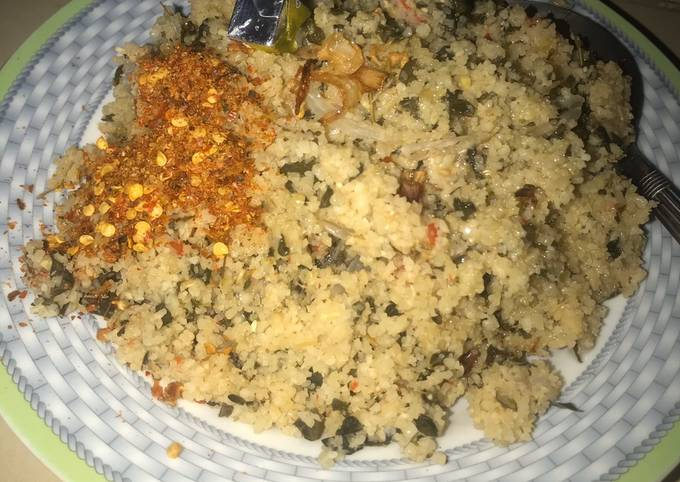
Source: cookpad.com Source: SherbraN &Makelos -
Djerma stew, Niger's national meal, is one of these delicacies that nourish the spirit of anyone is fortunate enough to experience it. It is a simple and traditional stew, but due to its long history of recipes passed down from generation to ancestor, it has evolved into its modern-day presentation. Although it may be eaten without meat, giving it a versatile dish that is suited for both vegans and vegetarians, the typical meat used in Djerma stew is chicken. The rest of the stew is flavored with onions and garlic sautéed in oil, followed by tomatoes, thyme, curry powder, paprika, and bouillon cubes. After letting the stew to come to a boil, vegetables and herbs, often carrots, chives, bay leaves, and parsley, are added before adding peanut butter to enrich and thicken. Once made, the dish is often served with rice for lunch.
Niger's food and diet are not only the ideal blend of delectable and nutritious, but they are also subconsciously environmentally friendly. The Niger cuisine has a low carbon footprint because it uses locally obtained, seasonal herbs, vegetables, starches, and meats, as opposed to many of the items used in the West, which are imported from all over the world.
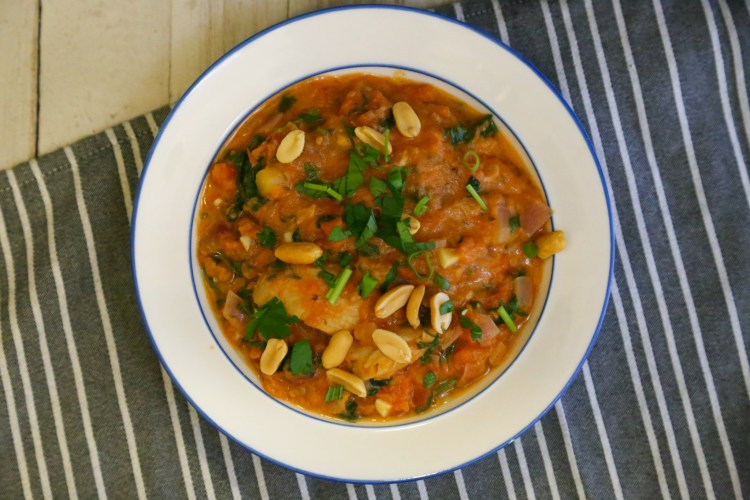
Source: healthyaddict Source: Sisi Jemimah's Recipes -
Dounguouri soko is a classic African dish from Niger. It's cooked with lamb, white beans, bell peppers, tomatoes, onions, garlic, oil, tomato paste, salt, pepper, and (optionally) natron - a salty and bitter mixture of baking soda, sodium chloride, and sodium sulfate used to soften the beans and facilitate digestion.
The stew is comparable to French cassoulet, however it lacks seasonings. The beans are soaked, washed, then cooked with natron. The beef is sliced into bits and cooked in oil with onions, peppers, tomatoes, garlic, tomato paste, and water.
The beans are then added to the saucepan, and the stew is cooked for a few minutes more, until the sauce thickens. Dounguouri soko is best served with mayonnaise.
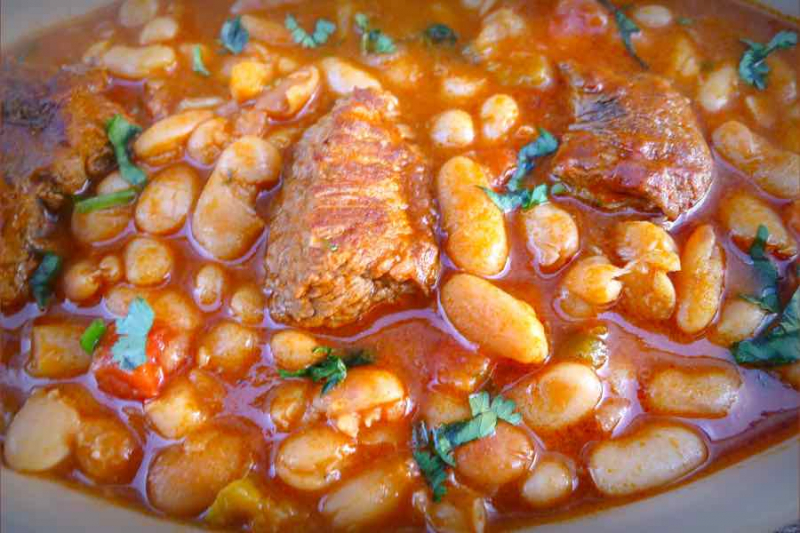
Source: 196 Flavors Source: AFD - Agence française de développement -
Many people have praised fonio as a "climate crisis-ready crop," a superfood alternative for quinoa, and a hopeful solution to help smallholder farmers in West Africa, where it has been produced for thousands of years. The ancient grain native to West Africa, also known as iburura and acha, and frequently considered the continent's oldest farmed cereal, has long been relished in the hilly areas of burkina faso, guinea, senegal, mali, and nigeria. In climate-change-affected areas with nutrient-deficient soils or drought conditions, where nothing can grow, fonio thrives and helps maintain biodiversity, providing hope in the face of climate change.
With the earthy and nutty flavor of couscous and the creamy but crunchy consistency of quinoa, fonio may be used in the same ways as other grains, sprinkled over salads, added to stews or soups, cooked into porridge, or converted into baked products when ground into flour. Fonio is naturally gluten-free, making it an excellent choice for anyone suffering from Celiac disease or gluten sensitivity.
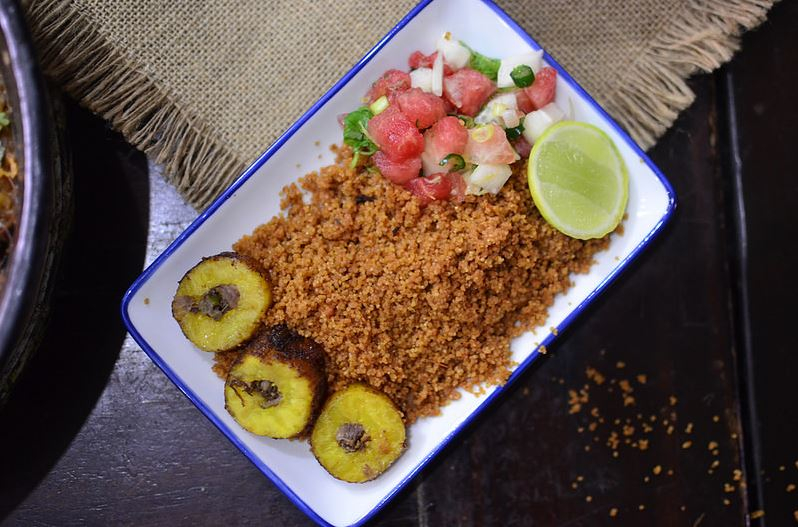
Source: Connect Nigeria Source: Ndudu by Fafa -
Niger's favorite family cuisine is goat meat or mutton curry. The entire dish is simmered in goat flesh stock. Herbs are commonly used to season it. The goat flesh remains soft in this meal, and wonderful liquid pours from it.
For the record, Nigerian goat curry is the real deal, and the taste never deceives It wouldn't be wrong to claim that goat meat never disappoints when it comes to bringing powerful tastes to soups, stews, and curries.
The Nigerian goat curry is a delectable meal made with goat flesh stock that has been seasoned with herbs and slow simmered until soft with all of the rich fluids seeping out of the bone and then prepared into a sauce. To make it a complete supper, goat meat and vegetables are added - quite wonderful. One of the disadvantages of cooking goat meat is that it takes an inordinate amount of time on the burner to get soft. Goat meat never disappoints, especially when it comes to enhancing the flavor of stews, sauces, and even soups. This recipe would go well with rice, potatoes, or yam.
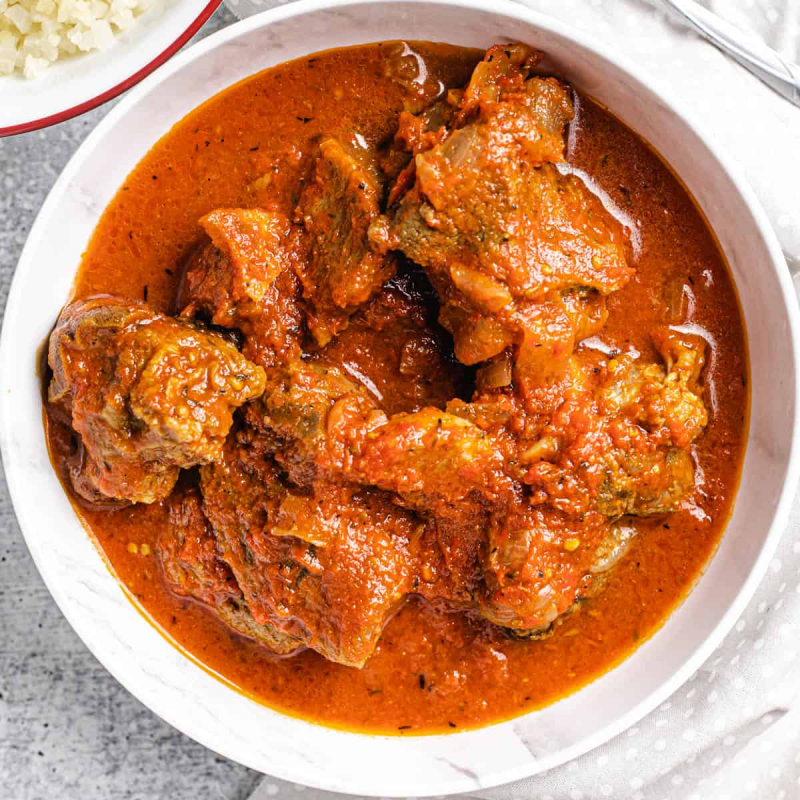
Source: Low Carb Africa Source: SisiYemmieTV -
A famous Nigerian street food combination is fried yam (dundun) with ata dindin. Fried Yam (Dundun) is exactly what the name implies: Fried Yam, whereas Ata dindin is the Yoruba language equivalent of Fried Stew. Fried Yam is quite excellent and is regularly served alongside Fried Plantain on the streets, especially at night (Dodo).
Fried Yam (Dundun) can be prepared in two ways: first, by frying chunks of raw yam in vegetable oil, and second, by parboiling the yam first before deep frying. Both ways are common, however some people prefer parboiling since they find it difficult to get the right consistency when frying raw yam. Frying the yam without water almost always results in the yam not being adequately cooked on the interior while being crisp on the surface.
Another explanation is when the yam is fried on high heat. Cooked yam (Dundun) should be fried over a low to medium heat to allow the yam to cook correctly on the inside as well as the outside.
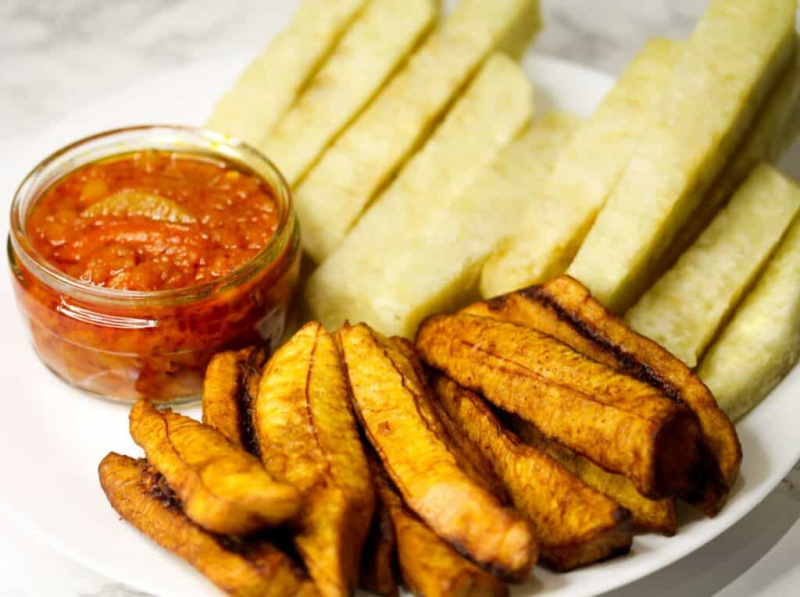
Source: Sims Home Kitchen Source: Yummieliciouz Food Recipes










